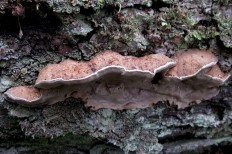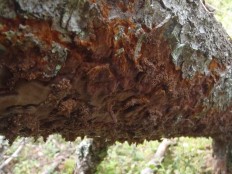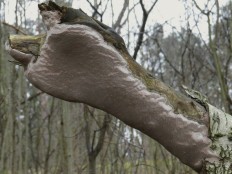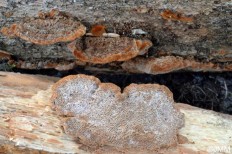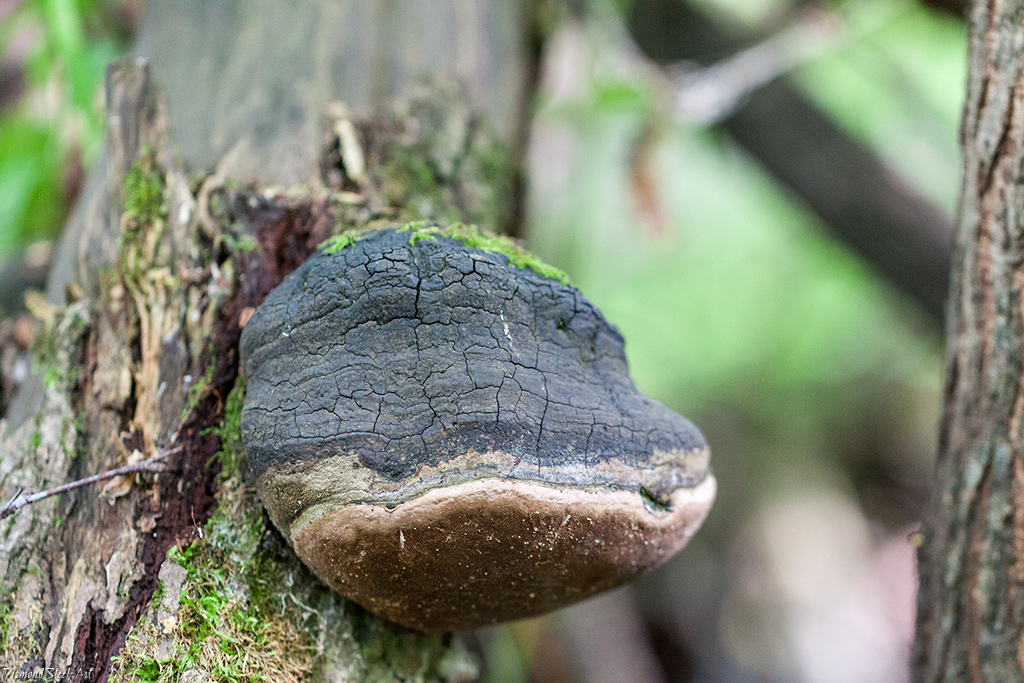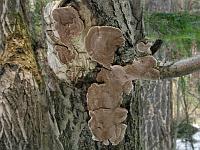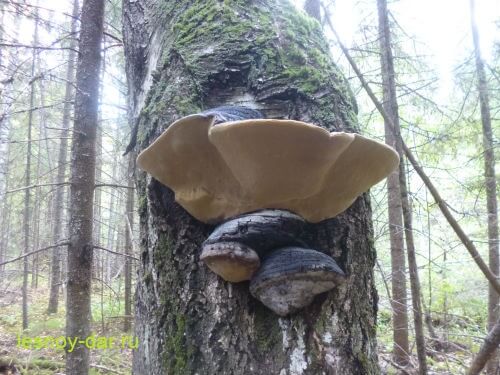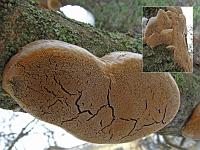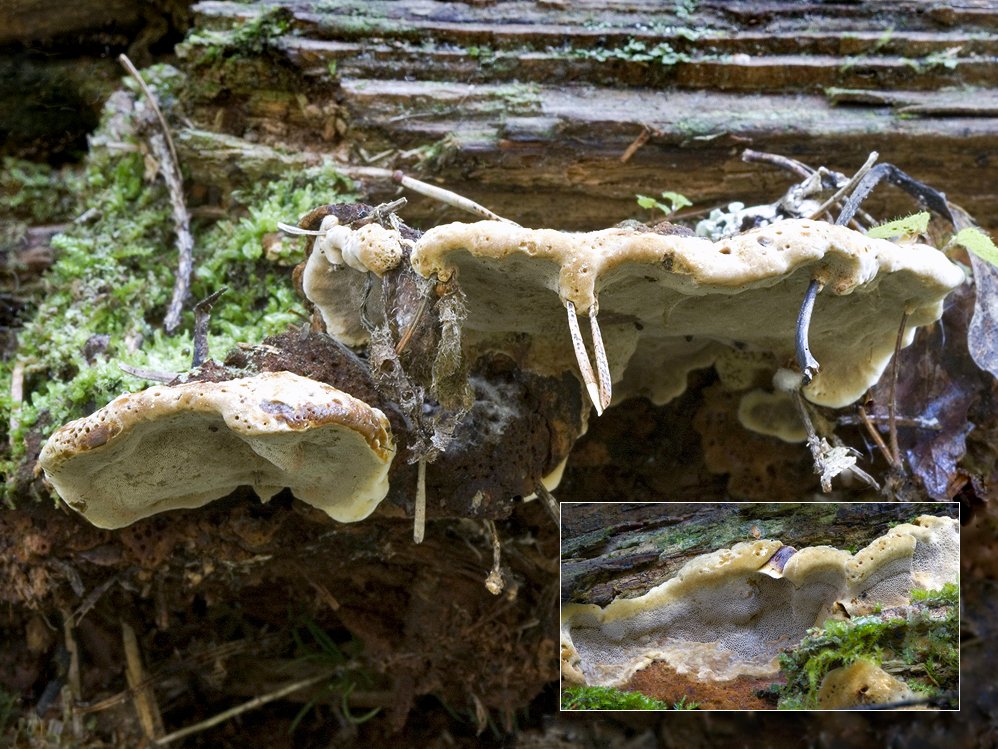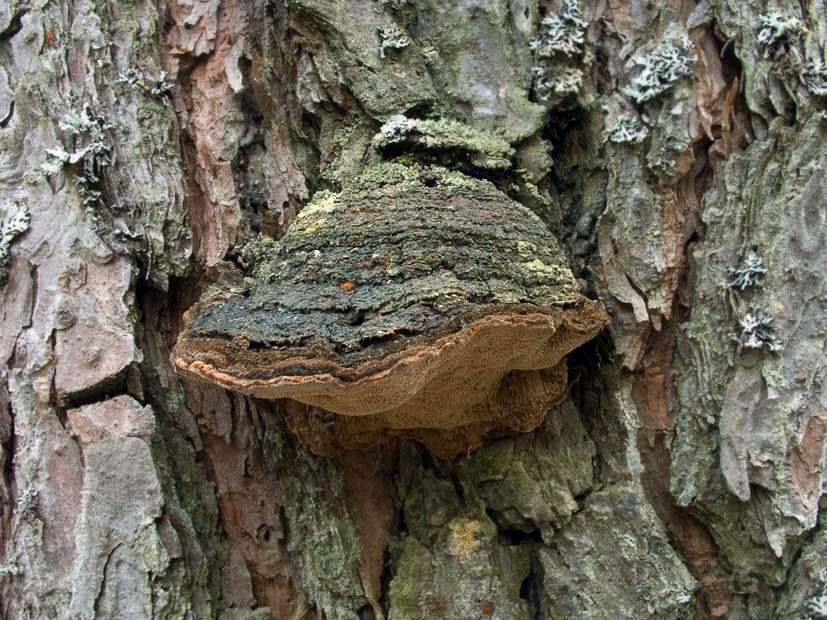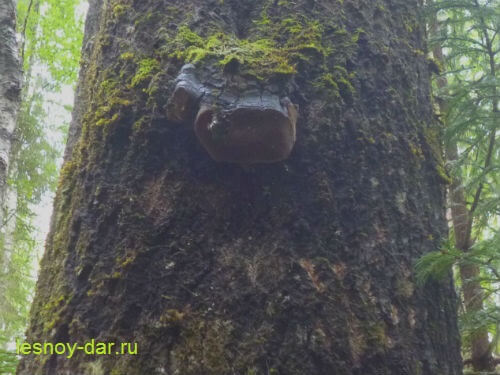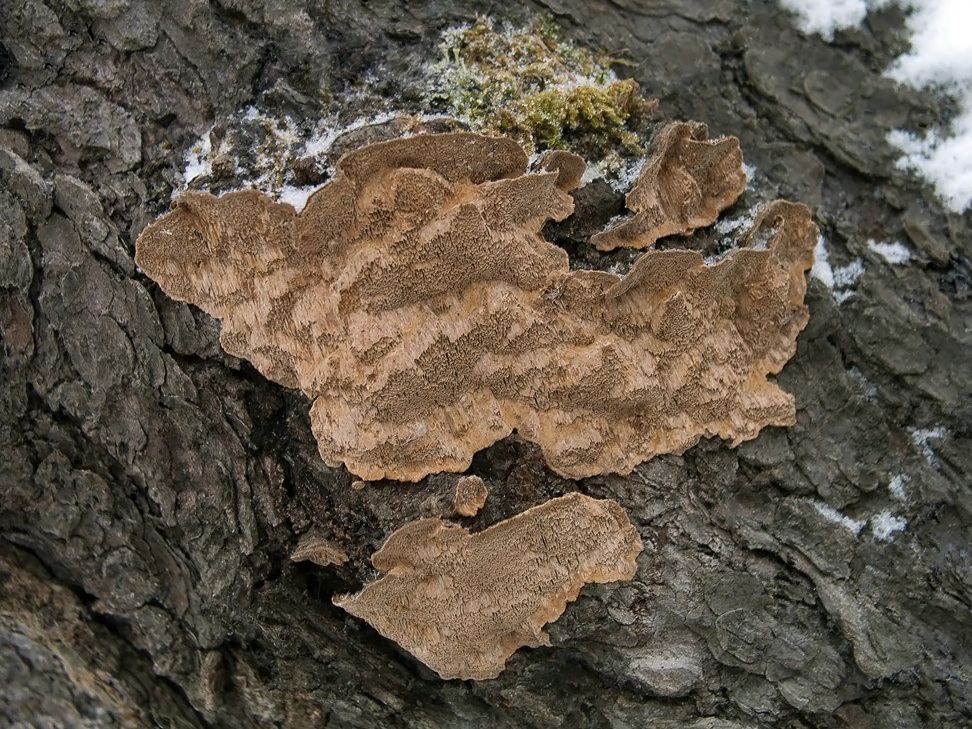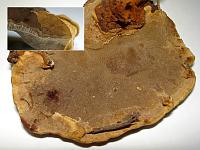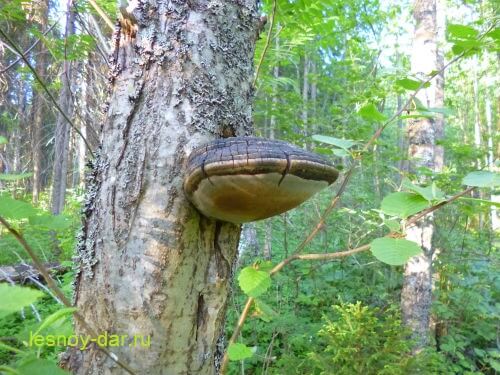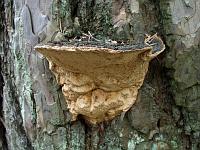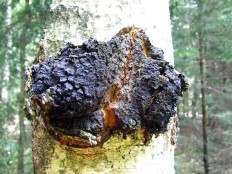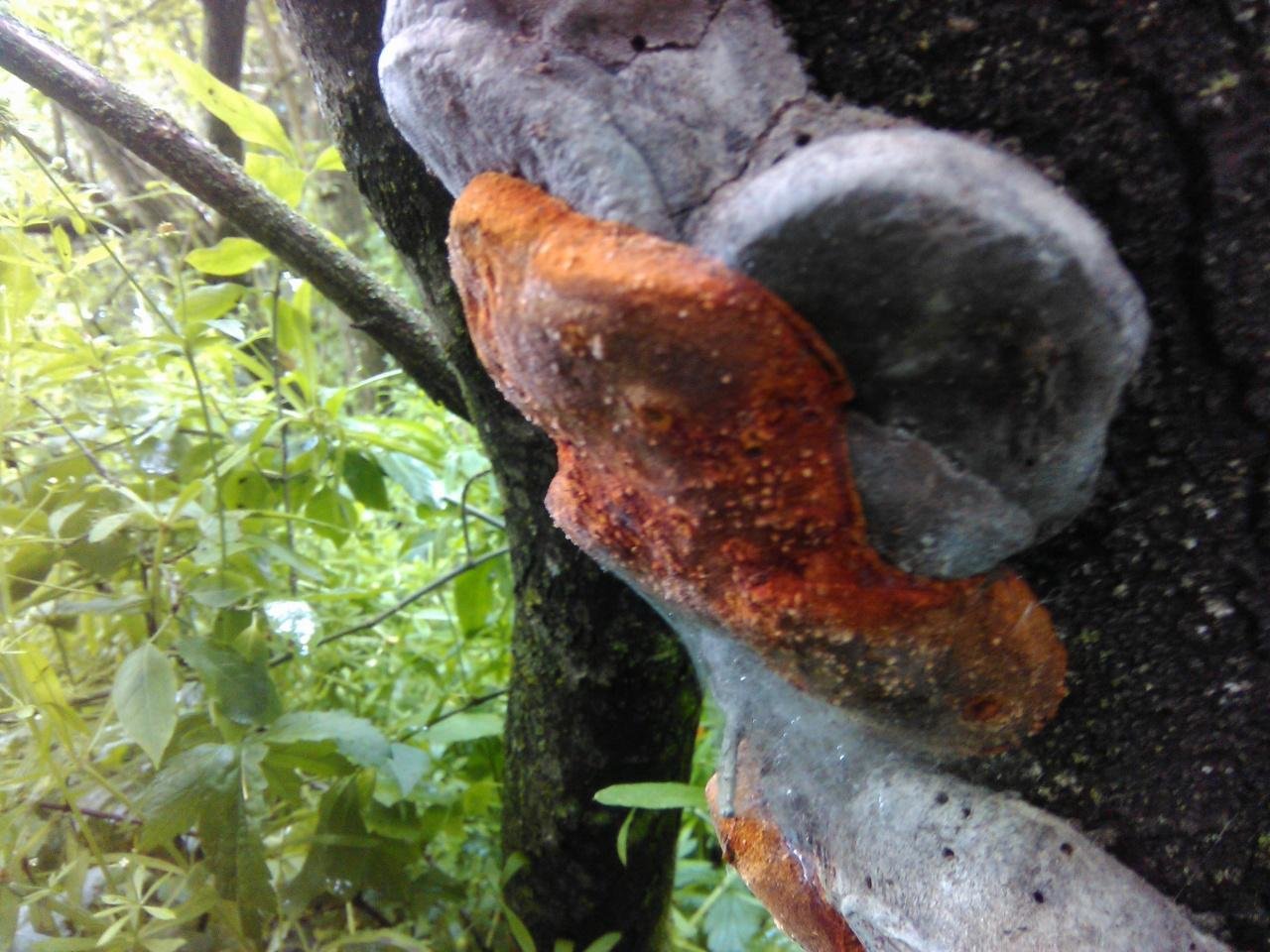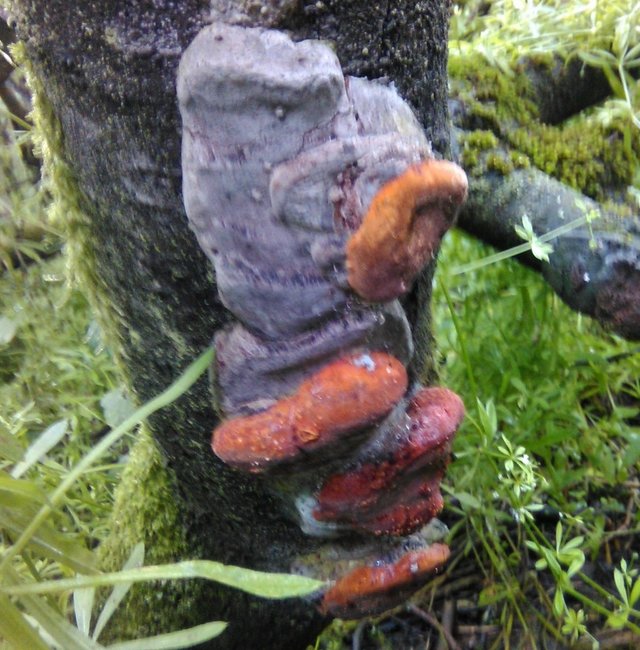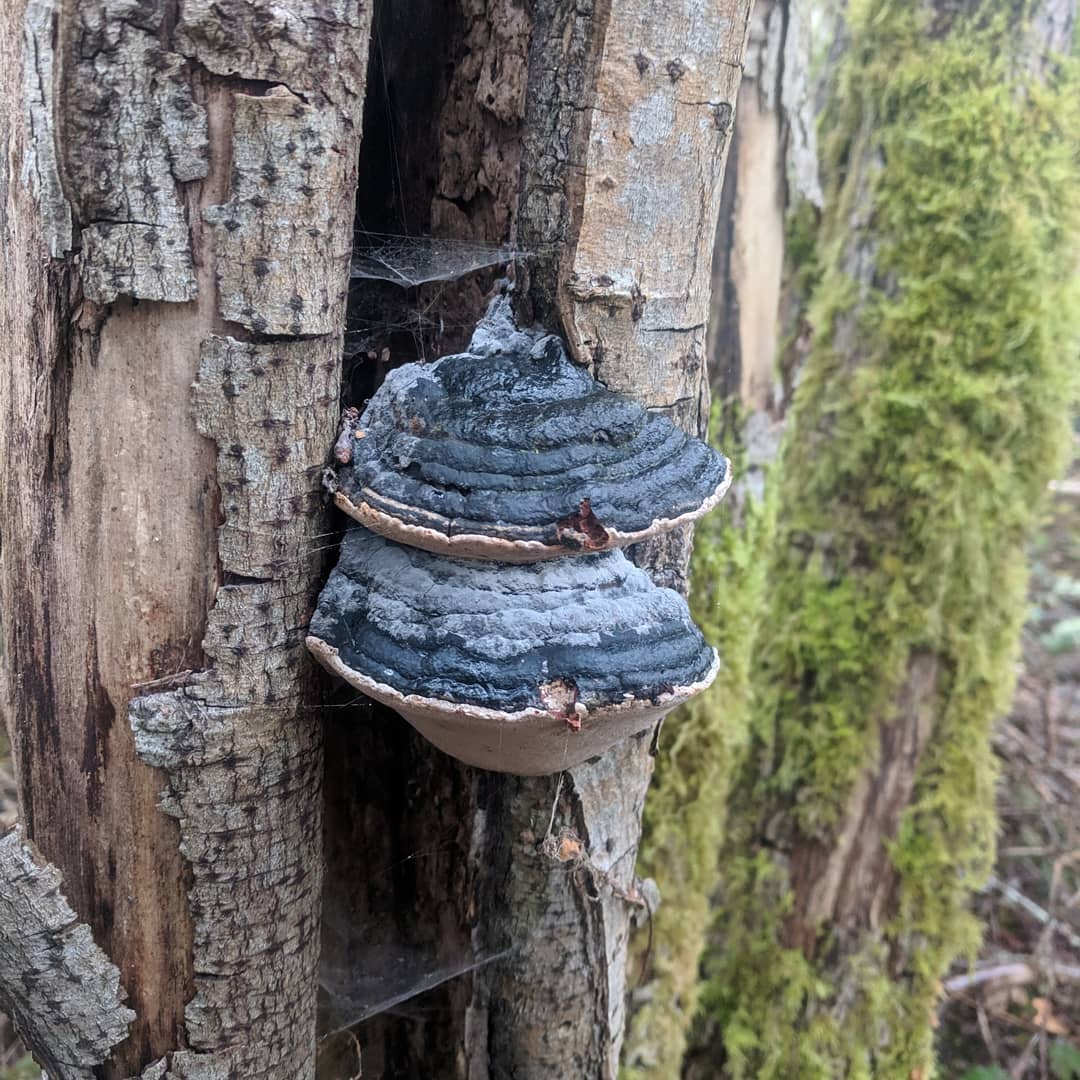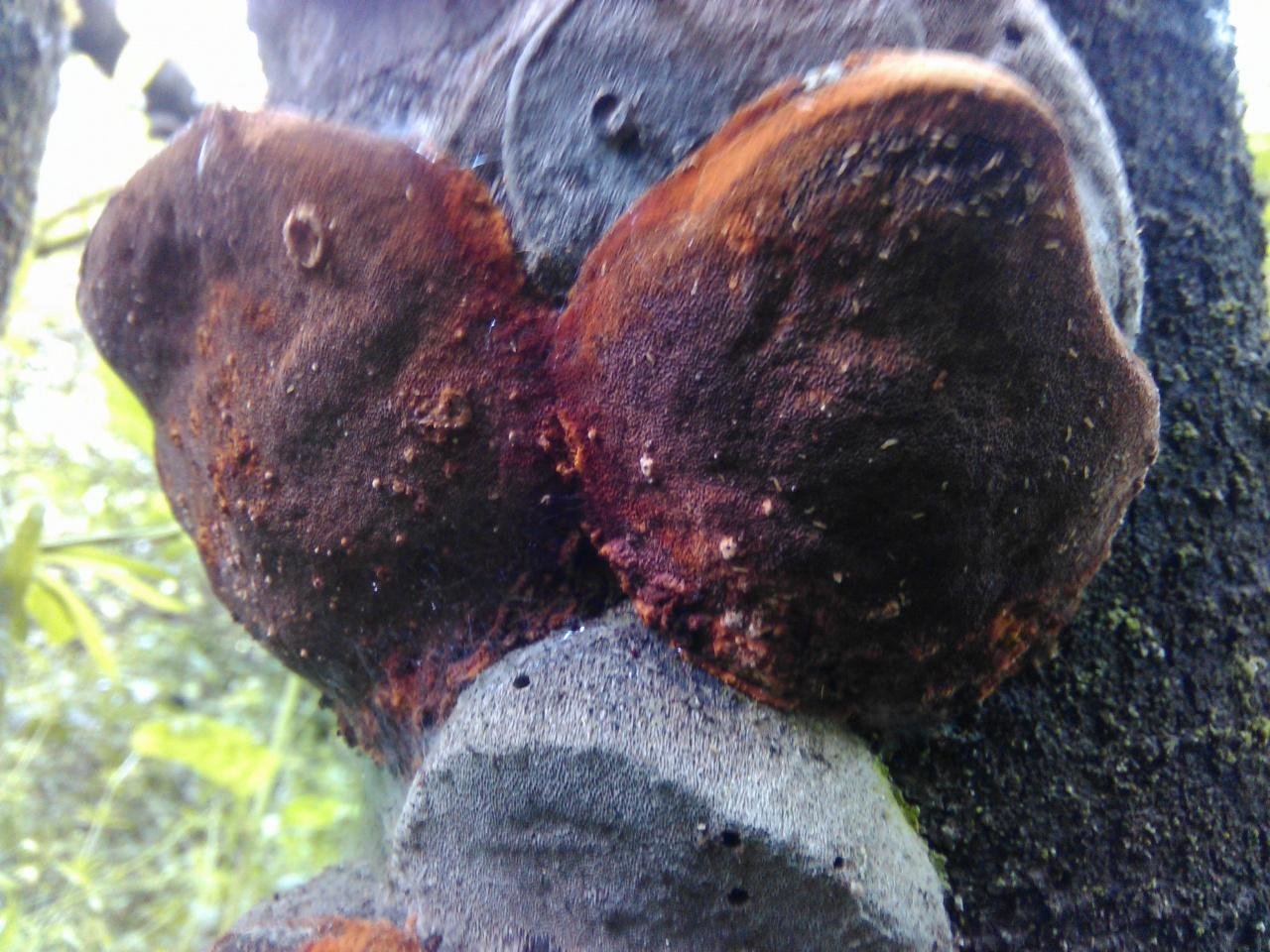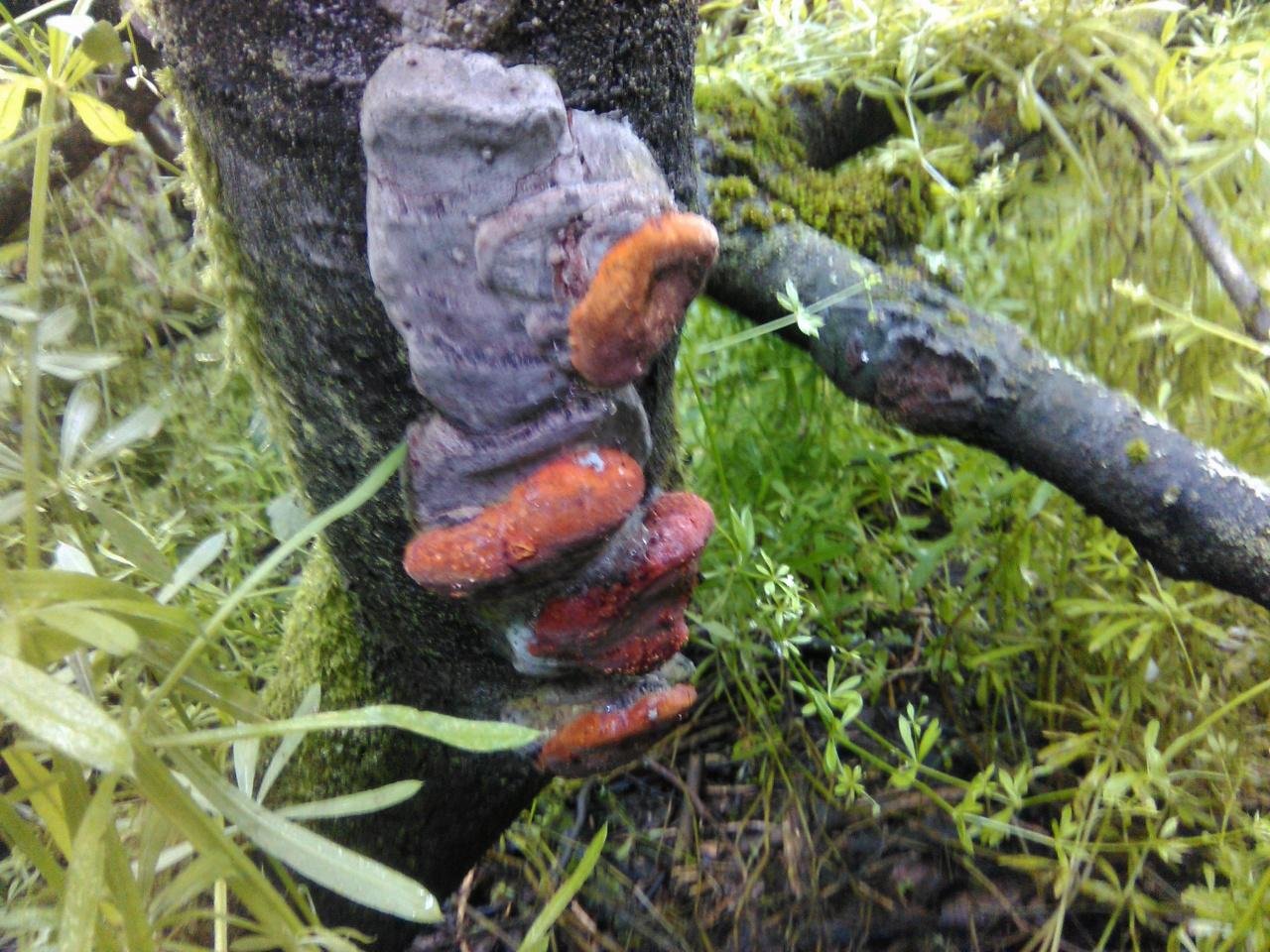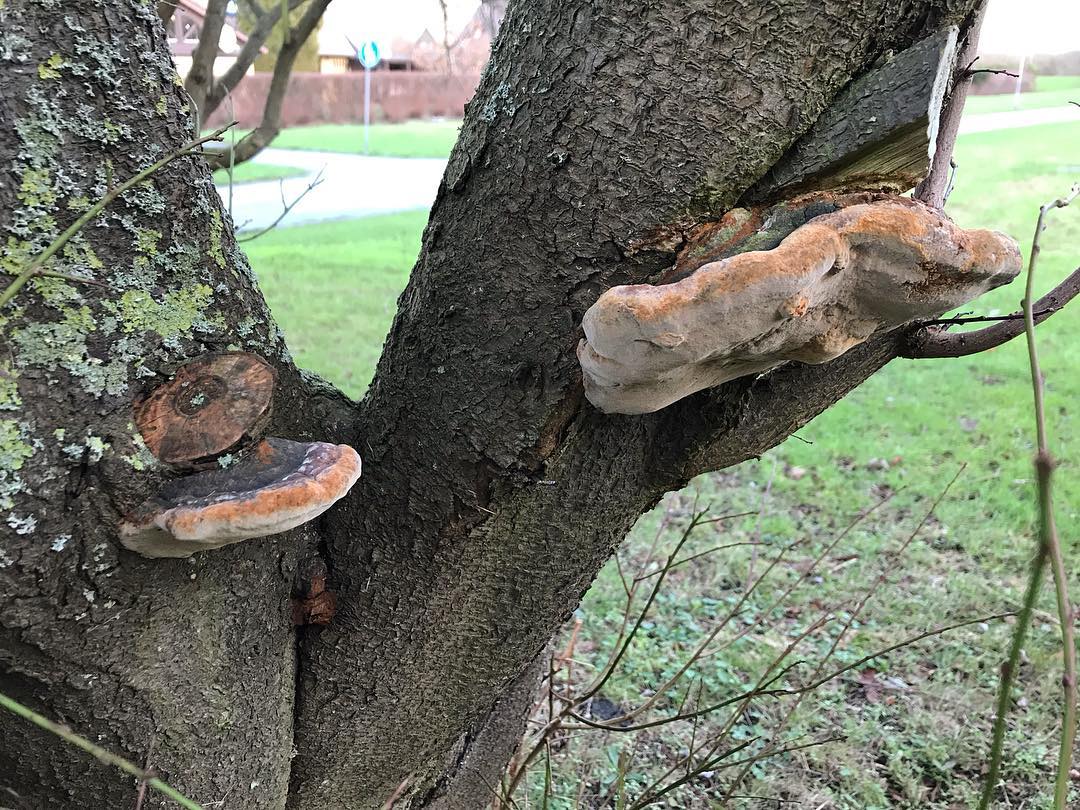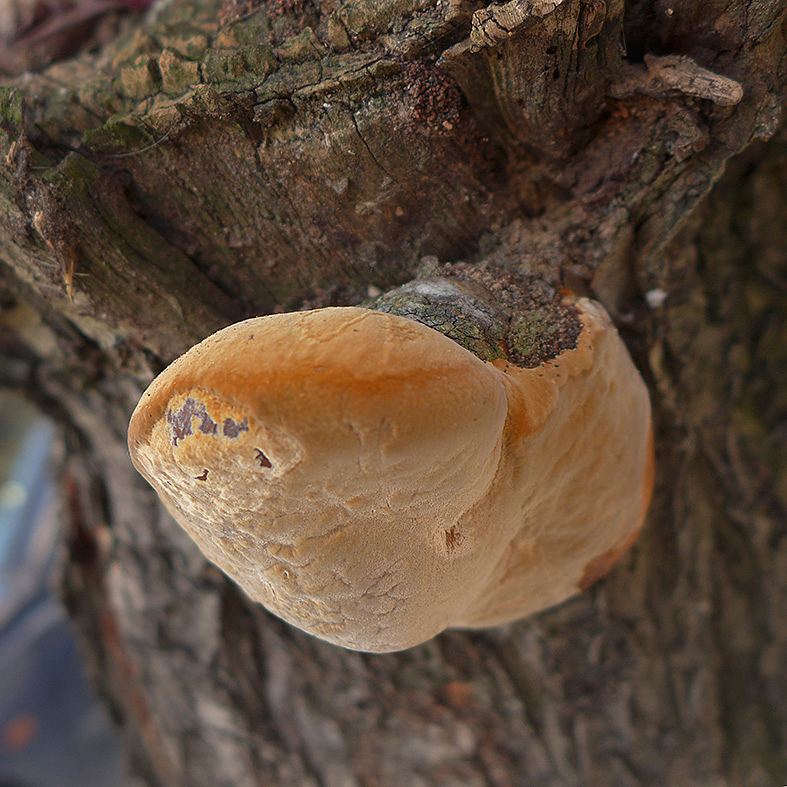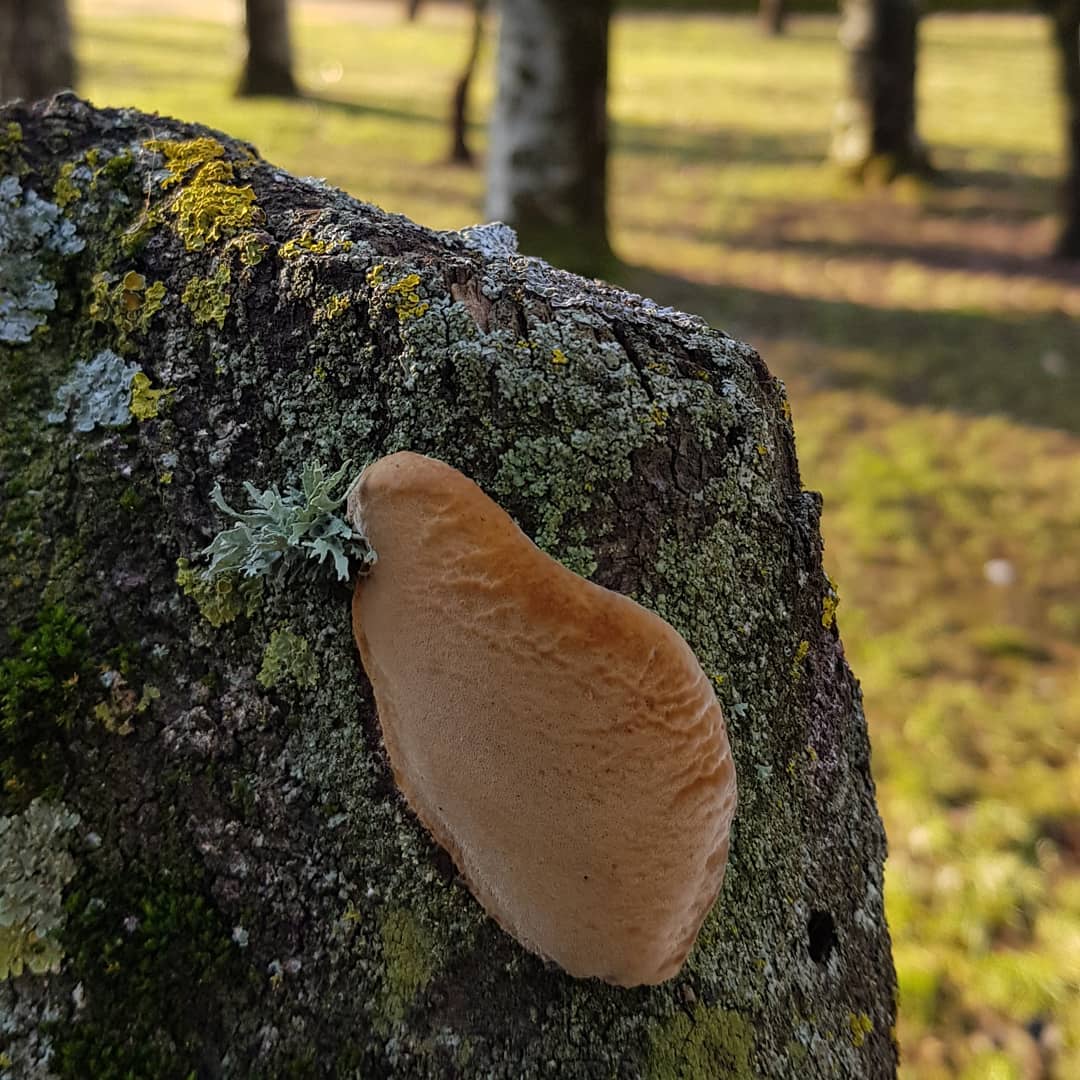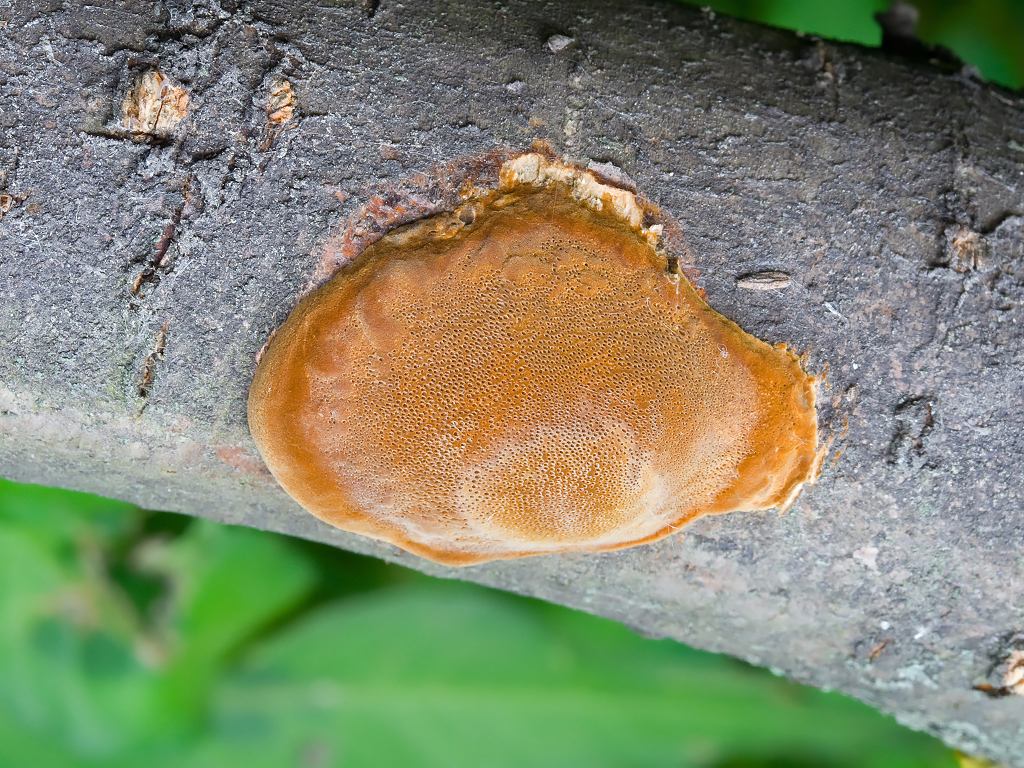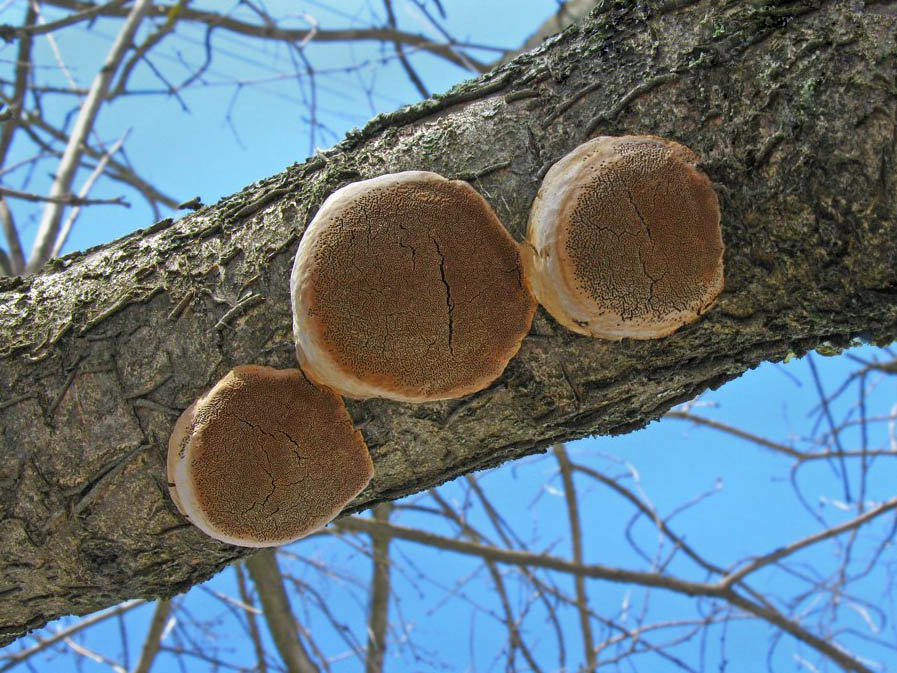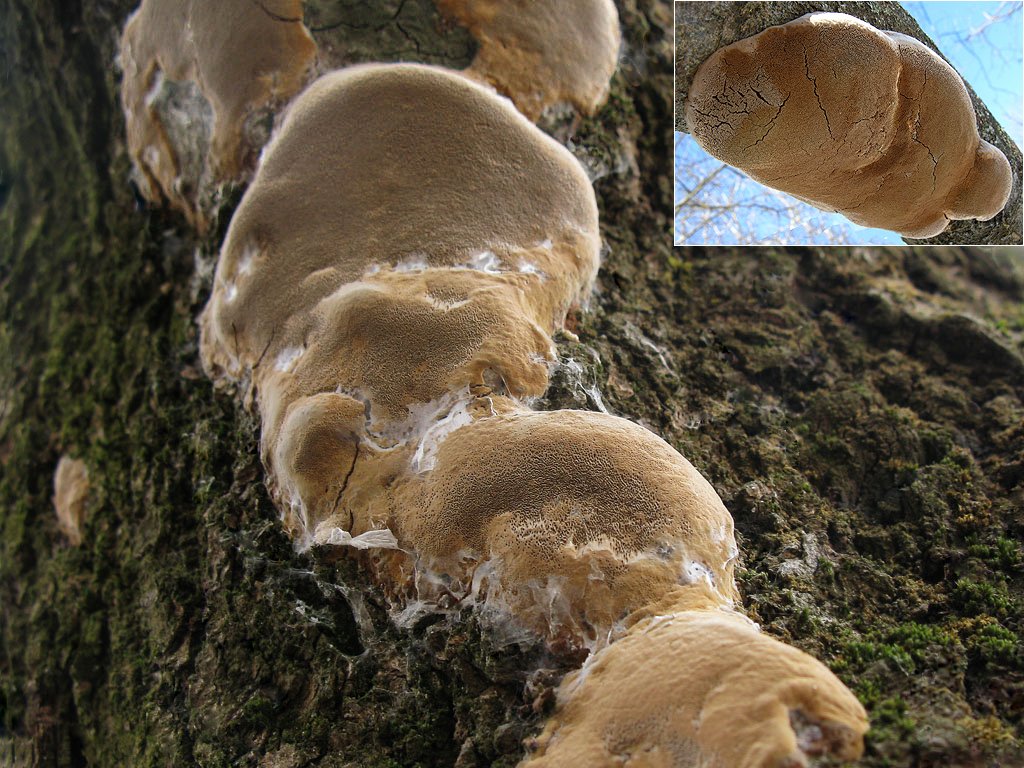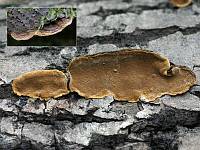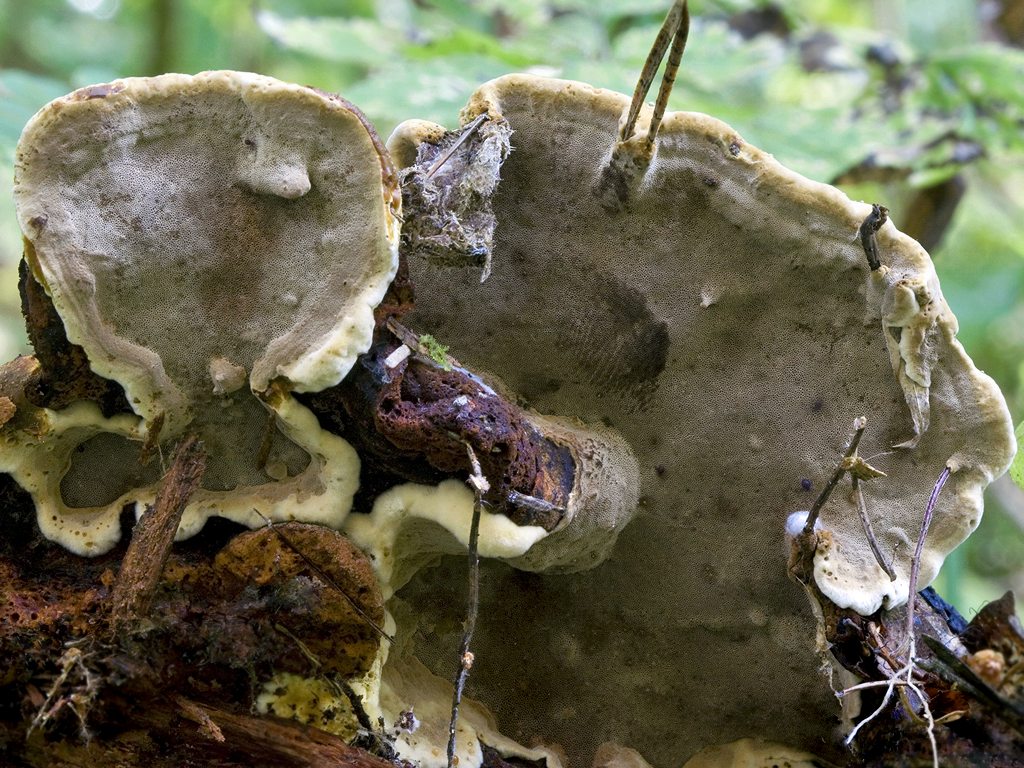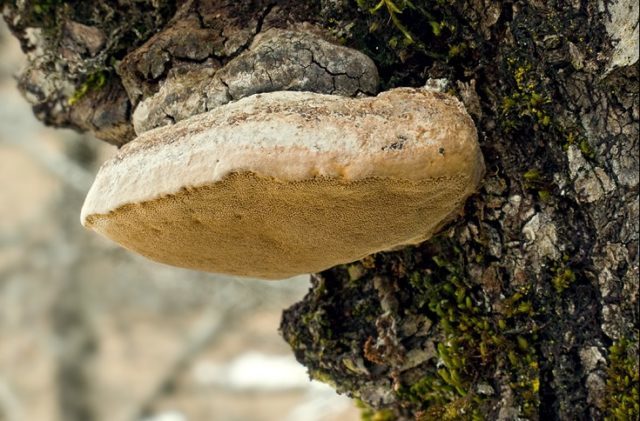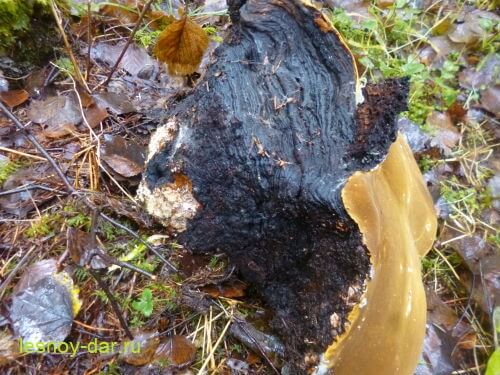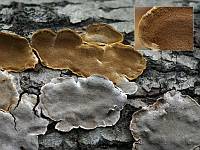Humpbacked Trametes (Trametes gibbosa)
Synonyms:
- Humpbacked polypore
- Merulius gibbosus
- Daedalea gibbosa
- Daedalea virescens
- Polyporus gibbosus
- Lenzites gibbosa
- Pseudotrametes gibbosa

Description
Fruiting bodies are annual, in the form of sessile semicircular caps or rosettes 5-20 cm in diameter, located singly or in small groups. The thickness of the caps varies on average from 1 to 6 cm. The caps are more or less flat, with a hump at the base. The surface is white, often with individual darker concentric stripes of brownish, ocher or olive shades (optionally white with a pinkish-brown edge), slightly pubescent. The edge of the cap is rounded in young specimens. With age, the pubescence is lost, the cap becomes smooth, creamy-buffy and overgrown (mostly in the central part, although it can be almost over the entire surface) with epiphytic algae. The edge of the cap becomes sharper.
The tissue is dense, leathery or corky, whitish, sometimes yellowish or grayish, up to 3 cm thick at the base of the cap. The smell and taste are inexpressive.
The hymenophore is tubular. The tubules are white, sometimes light gray or yellowish, 3-15 mm deep, ending in white or creamy radially elongated angular slit-like pores 1.5-5 mm long, 1-2 pores per millimeter (in length). With age, the pore color becomes more ocher, the walls are partially destroyed, and the hymenophore turns into an almost labyrinthine one.

Spores are smooth, hyaline, non-amyloid, more or less cylindrical, 2-2.8 x 4-6 microns in size. The spore print is white.
The hyphalous system is trimic. Generative hyphae with non-thickened walls, septate, with buckles, branching, 2-9 microns in diameter. Skeletal hyphae with thickened walls, aseptic, unbranched, 3-9 microns in diameter. Connecting hyphae with thickened walls, branching and sinuous, 2-4 microns in diameter. Cystyds are absent. Basidia are clavate, tetrasporous, 14-22 x 3-7 microns.
Season and distribution
The humpback tinder fungus grows on deciduous species (dead wood, dead wood, stumps - but also on living trees). Prefers beech and hornbeam, but also occurs on birch, alder and poplar. Causes white rot. Fruiting bodies appear in summer and grow until the end of autumn. They keep well during the winter and can be seen next spring.
A fairly common form of the northern temperate zone, although it noticeably gravitates towards the southern regions.
Similar types and differences from them
The humpback tinder fungus differs from other representatives of the genus Trametes by radially diverging slit-like, as if dotted, pores.
A certain exception is the graceful trametes (Тrametes elegans), which has pores of a similar shape, but in it they diverge in a fountain-like manner from several centers. In addition, the graceful trametess has smaller and thinner fruit bodies.
In Lenzites birch, the hymenophore is brownish or grayish-brownish, lamellar, the plates are thick, branching, with bridges, which can give the hymenophore the appearance of an elongated labyrinth.
Other information
In a tinder fungus with a humpbacked fish, substances have been found that have antiviral, anti-inflammatory and antitumor effects.
Photo: Alexander, Andrey.
Fieldman (Agrocybe)
Agrocybe is a small but vibrant genus that belongs to the Bolbitiaceae family. The Russian name Agrocybe - Polevik - is rarely used; probably because there is no one to apply and there is no time. It cannot be said that ordinary users of the Russian language do not know the mushrooms of this family at all, but it has not yet reached an independent name. Perhaps the reason for this lies in the fact that the "collected" representatives of this genus are ideologically close to champignons (Agaricus), and the others are of little interest besides specialists.And experts are well aware that the genus Agrocybe includes soil saprophytes and xylotrophs, and the latter are abundantly cultivated in the respective countries.
Agrocybe is characterized by a medium size of the fruiting body, a private veil and, most importantly for determining the genus, the tobacco-brown color of the spore powder.
Early polevicAgrocybe praecox
Synonyms: Early flakes Agrocybe early - Russia Polowka wczesna - Poland Spring Agaric - England, UK Agrocybe precoce - France Voreilender Ackerling - Germany
The cap is 3-8 cm wide, in youth it is hemispherical with a distinct “cushion-like pattern”, with age it opens up to spread. The color is vaguely yellowish, light clay, sometimes fading in the sun to a dirty whitish color. In wet weather, faint signs of "zoning" can be found on the cap. The remains of the private bedspread often remain on the edges of the cap, which gives this mushroom a resemblance to representatives of the genus Psathyrella. The flesh of the cap is whitish, thin, with a pleasant mushroom smell. The plates are rather frequent, wide, adherent with a "tooth"; in youth, light, yellowish, with age, as the spores mature, darken to dirty brown. Spore powder, tobacco brown. The leg is the same color as the cap, darker in the lower part. The stem is hollow, but at the same time very stiff and fibrous. Height 5-8 cm, in the grass it can be higher; thickness up to 1 cm, although usually thinner. In the upper part, the remains of the ring, as a rule, are somewhat darker than the stem itself (they become even darker when the mushroom matures, being decorated with falling spores). The flesh is brownish, especially at the bottom.
Distribution: Occurs from early June to mid-July in gardens, parks, along the edges of forest roads, preferring rich soils; can settle on strongly rotted wood remains. In some seasons, it can bear fruit very abundantly, although it usually comes across less often.
Similar species: Given the timing of growth, it is rather difficult to confuse the early vole with any other fungus. Closely related and outwardly similar species (such as, for example, Agrocybe elatella) are much less common.
Edible: Normal edible mushroom, although some sources indicate bitterness.
In the collector's understanding, Agrocybe praecox is a kind of “unfinished champignon”. Growing conditions, discs darkening with age, strong dependence of size and weight on soil fertility - all this gives the right to treat this field as a champignon for the poor and hasty. Having met an old woman in the forest with a basket of selected agrocybians, I asked what she was collecting. “Why, chamignons, we eat them every year,” she replied. Inspired by this example, I also recruited early agrocytes and treated my friends. Champignons for ourselves and champignons, if you do not go into details, except for our brother, are of little interest to anyone.
Agrocybe erebiaAgrocybe erebia
The hat is 5-7 cm in diameter, at first bell-shaped, sticky, dark brown, brown-chestnut, with a fawn veil, then prostrate, flat, with a wavy-lobed edge, light brown or brown, smooth, shiny, with a raised wrinkled edge. Plates: frequent, adherent with a tooth, sometimes inversely forked, light, then leathery with a light edge. The spore powder is brown. Leg: 5-7 long and about 1 cm in diameter, slightly swollen or fusiform, longitudinally fibrous, with a ring, with a granular bloom above it, striped below. The ring is thin, bent or pendant, striped, gray-brownish. The pulp is thin, cotton-like, pale yellow, grayish-brownish, with a fruity odor. It is considered a conditionally edible mushroom.
Distribution: from the second half of June to autumn, in mixed and deciduous forests (with birch), at the edge of the forest, outside the forest, near roads, in parks, in grass and on bare soil, in groups, rarely.
Link to article for posting on sites
Similar types and differences from them
Most mycologists consider tinder fungi as a group of fungi that grow mainly on the trunks of deciduous trees, including alder, aspen, birch, oak, and ash.Most of these types of mushrooms are difficult to distinguish. The false oak tinder fungus belongs to the category of the original varieties and prefers to grow mainly on oak.
A similar species to it is the false aspen tinder fungus, the fruit bodies of which are smaller in size, characterized by a gray-brown or dark gray surface.
The powerful tinder fungus is similar to another inedible species - the gartig tinder fungus. However, the fruit bodies of the latter grow to the surface of the wood completely and grow mainly on the trunks of coniferous trees (most often fir).
External description
The fruit body of this mushroom is perennial, its length can be from 5 to 20 cm. At first it has the shape of a kidney, then it becomes spherical, resembling an influx. The tubular layer is convex, rounded, brownish-rusty, layered, with small pores. It is this layer that is the characteristic feature of this fungus. The fruit body grows sideways, it is thick, sessile, and has irregularities and concentric grooves on top. Radial cracks often appear on it. The color of the fruit body is gray-brown or black-gray, the edges are rounded, rusty-brown.
Yellowish spore powder.
The flesh of the mushroom is thick, tough, hard, woody, reddish-brown.
Tinder Gartig (Phellinus hartigii)
Fruit body:
the fruiting bodies of the fungus are usually formed in the lower part of the trunk from the northern side. Single fruiting bodies are perennial. Sometimes fruiting bodies grow together in several specimens. First, the fruiting bodies are nodular, then cantilever. Attached by a wide base. Quite large, about 28 centimeters wide, up to 20 centimeters thick. The upper surface is rough, with wide, staggered zones, at first it has a yellow-brown color, then changes color to a dirty grayish or blackish. As the mushroom matures, the surface cracks and becomes covered with green algae. The edges of the fruiting body are rounded, obtuse, ocher-brown or light reddish.
Hymenophore:
rusty brown or yellowish brown. The pores are angular or rounded. The tubes are arranged in several layers, each tubular layer is separated by a sterile layer.
Pulp:
woody, very hard, zoned. On the fractures, flesh with a silky sheen. Yellowish rusty or yellowish brown.
Spreading:
Tinder fungus Gartig is found in coniferous forests. Grows on conifers, usually on fir.
Similarity:
this species closely resembles the Phellinus robustus growing on the oak. The difference is the substrate and the layers of sterile tissue between the layers of the tubes.
Household purpose:
Gartig's polypore causes a pale yellow rot that is limited by narrow black lines from healthy wood. This mushroom is a dangerous pest of fir. Trees are infected through broken branches and other injuries. In the early stages of decay, the affected wood becomes fibrous, soft. Brown mycelium of the fungus accumulates under the bark, rotten branches appear. Then, depressed places are formed on the surface of the trunks, in which the fungus forms fruiting bodies.
Notes:
trees affected by tinder fungus are scattered in fir plantations singly. In the foci of infection, the infection with tinder fungus can reach 40% or more. Especially in old fir stands. The thickest trees in the stand are mainly affected. The development of rot in the trunk of such trees is accompanied by the formation of tinder bodies on the trunks. As a result, the resistance of the trees decreases, the clutter and the formation of foci of stem pests increase.

